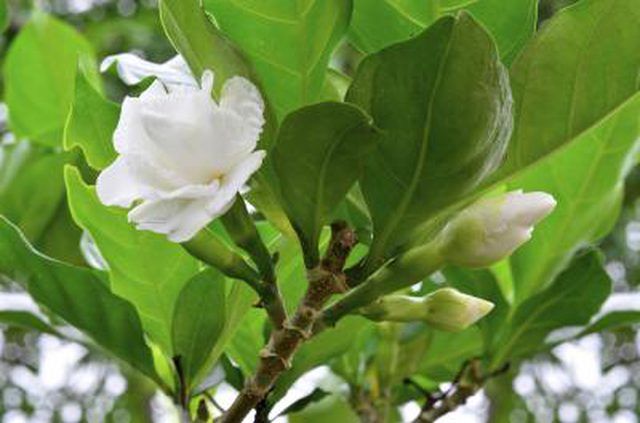Bulbs
Flower Basics
Flower Beds & Specialty Gardens
Flower Garden
Garden Furniture
Garden Gnomes
Garden Seeds
Garden Sheds
Garden Statues
Garden Tools & Supplies
Gardening Basics
Green & Organic
Groundcovers & Vines
Growing Annuals
Growing Basil
Growing Beans
Growing Berries
Growing Blueberries
Growing Cactus
Growing Corn
Growing Cotton
Growing Edibles
Growing Flowers
Growing Garlic
Growing Grapes
Growing Grass
Growing Herbs
Growing Jasmine
Growing Mint
Growing Mushrooms
Orchids
Growing Peanuts
Growing Perennials
Growing Plants
Growing Rosemary
Growing Roses
Growing Strawberries
Growing Sunflowers
Growing Thyme
Growing Tomatoes
Growing Tulips
Growing Vegetables
Herb Basics
Herb Garden
Indoor Growing
Landscaping Basics
Landscaping Patios
Landscaping Plants
Landscaping Shrubs
Landscaping Trees
Landscaping Walks & Pathways
Lawn Basics
Lawn Maintenance
Lawn Mowers
Lawn Ornaments
Lawn Planting
Lawn Tools
Outdoor Growing
Overall Landscape Planning
Pests, Weeds & Problems
Plant Basics
Rock Garden
Rose Garden
Shrubs
Soil
Specialty Gardens
Trees
Vegetable Garden
Yard Maintenance
What Kind of Food Do Gardenia Plants Need?
What Kind of Food Do Gardenia Plants Need?. Gardenias are well known for the beautiful cream hue of the blooms as well as a powerful, intoxicating fragrance. To maintain the healthy appearance of the blooms and the shine of the dark green leaves, proper care is required. While the gardenia is not a particularly simple plant to grow, the appropriate...
Gardenias are well known for the beautiful cream hue of the blooms as well as a powerful, intoxicating fragrance. To maintain the healthy appearance of the blooms and the shine of the dark green leaves, proper care is required. While the gardenia is not a particularly simple plant to grow, the appropriate food makes the task of growing gardenias a bit less daunting.
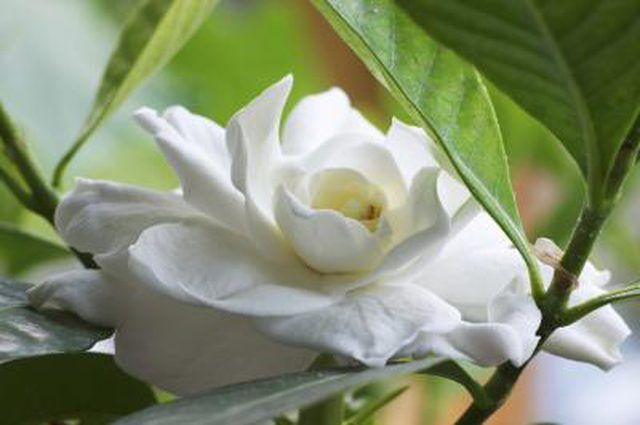
To produce beautiful, healthy gardenias, the gardener must nourish the plant appropriately. Although the preferred food is dependent on the gardener, acidic plant foods, such as rhododendron azalea food mixes and fish emulsion fertilizers, are commonly favored for these delicate plants.
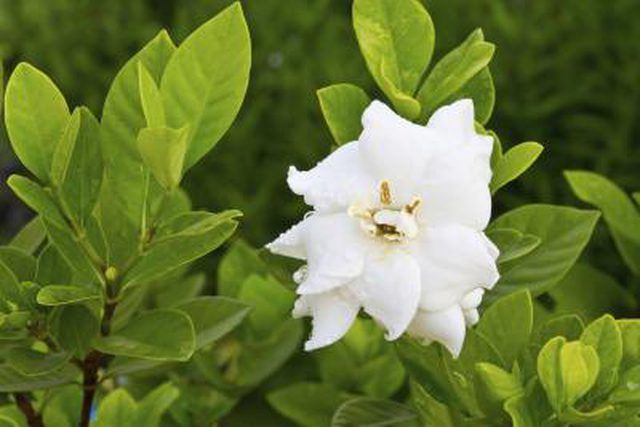
A variety of acidic rhododendron azalea foods are sold commercially. Miracid Acid-Loving Plant Food is a food that feeds plants both through the leaves and the roots. This popular food contains a great deal of iron and other nutrients necessary for the health of gardenia plants. Miracid is available exclusively at official Miracle-Gro nurseries. Inquire with any nursery to learn of the options available to produce healthy gardenia plants with large blooms.
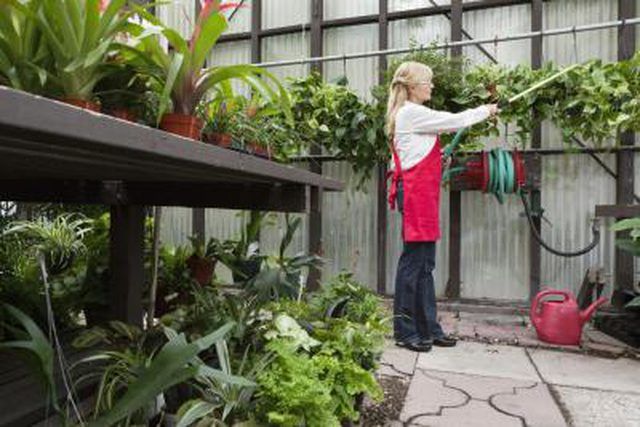
A fish emulsion is created when fish is cooked and pressed to release oils then added to by-products that have been boiled down. Because of its naturally acidic qualities and since nutrients are released immediately after application, many gardeners prefer a fish emulsion to fertilize gardenia plants. Those gardeners who favor organic compounds often choose to use a fish emulsion fertilizer.
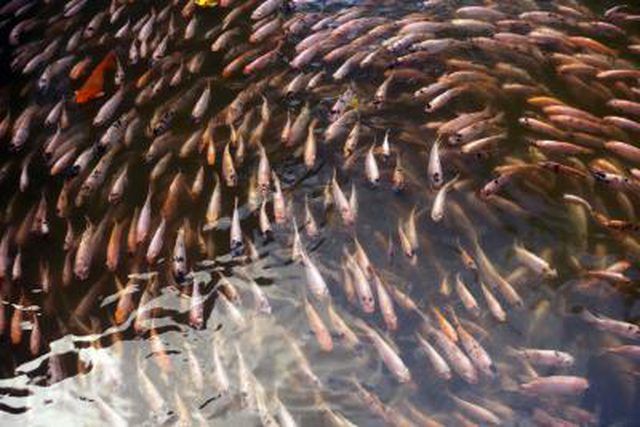
A common difficulty with gardenia maintenance is hard water. Add 1 cup of white distilled vinegar to a gallon of water and feed to the gardenia plant every three weeks. Iron will be released into the soil with the addition of the extra acid from the vinegar.
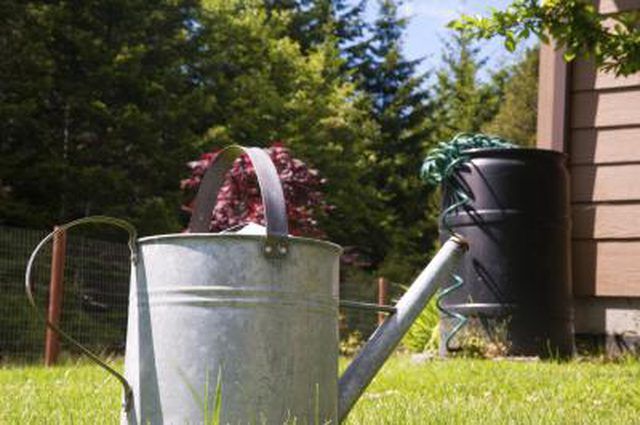
Begin to feed gardenias in mid-March and continue every three weeks. Since feeding makes the sensitive gardenia plant more susceptible to cold winter weather, cease feeding the plant in the fall. In colder climates, feeding may cease as early as September. If the buds of the flower droop, the plant is signaling that it requires feeding less often.
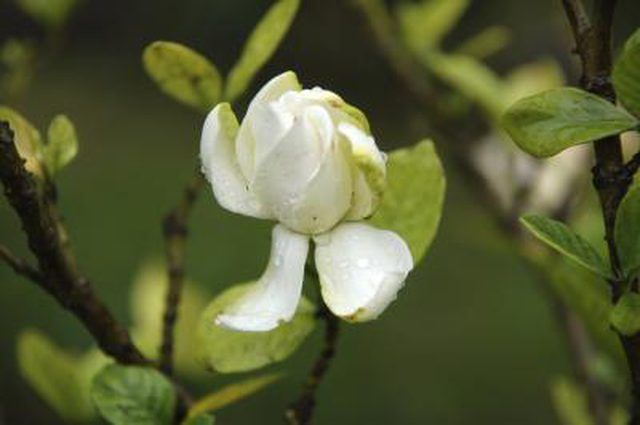
Since a gardenia is affected greatly by the type of soil in which it is planted, the suggested soil is acidic. A nursery can suggest a soil with the correct pH. The amount of water absorbed by the plant is also imperative. The soil must remain moist at all times, but never soggy. If the soil dries out or the leaves begin to pale, water immediately. Gardenia plants thrive in full sun, but necessitate some shade throughout the summer in extremely hot climates.
